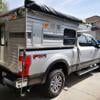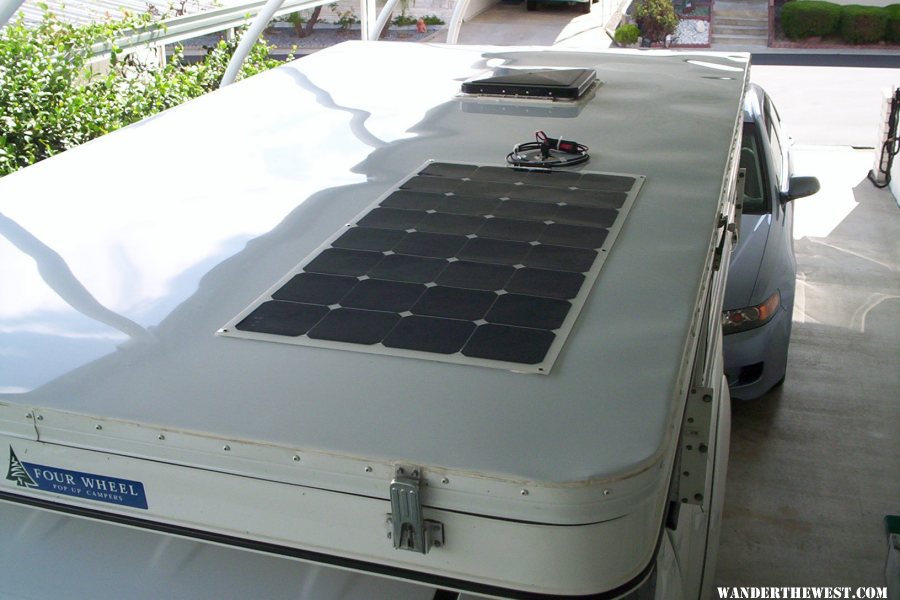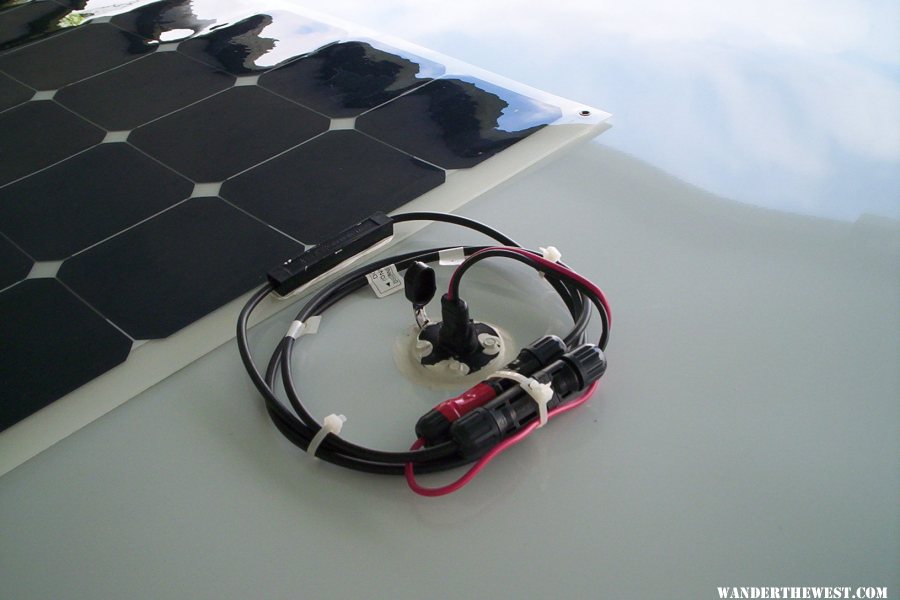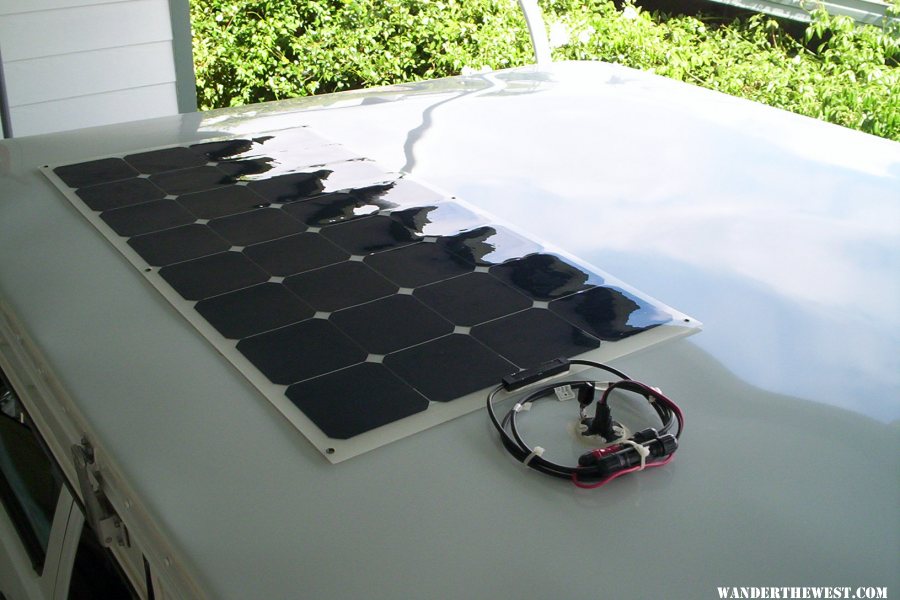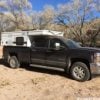Pics without the bricks:
Wire bundle
Reflection from my neighbors roof generates half an amp.
Am thinking about adding Dicor to finish the edge as there is a half inch overhang around the perimeter. however it is not needed.
Some of you are concerned about replacing the panel some day and getting the panel up. I decided i would remove the rectangle block and wires at the bottom of the panel and glue a new one on top. Panel is less than 1/4" thick. You still won't see it from the street.
It easily passed the freeway test and ...
Charging test Results
Turned on the Engle comp Refer Sat noon and let it draw the battery down to -77% full as of 8 am this morning.
Parked truck in front in the....morning overcast. Around 10 am -sun came out. Returned from church and groc store about 1:30...,
Checked Trimetric.
Voltage 13.9 .
Percent of full - 97.
Amp 1.6 indicated..
..Renology roof panel doing its job. Refer nice cool 39*.
Checked 4 pm.
Voltage - 13.5
Amps point - 6
Percent of full - 98
About 30 more minutes of sun - we live on east side of hill.(info repeated on my Build out Post)
Jim, nice job on the install. Thanks for all the performance data. That information will help other's still trying to size their system. Thought I mention that my cable layout on the roof was similar to yours but a little shorter. As I recently removed my 100 watt panel, I discovered that wind vibration on the wires caused the paint on the aluminum roof to wear off. I would recommend that you cut off those existing MC4 connectors and shorten the wire to only the amount needed and reattach new MC4 connectors. Those connectors cannot be floating on the roof or you will get a rubbing effect that will take the paint off the roof. You may just do away with the MC4 connectors and wire direct to the SAE plug into the roof connector. (I hear you on the warranty issue but I didn't want my roof to become a mess.) Just a thought. Harv



